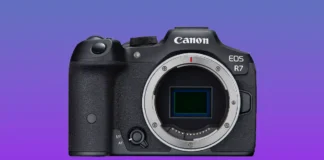Why Editorial Policy Matters
Every word published on dslrcamerasearch.com carries responsibility. Readers rely on the site to make informed decisions about DSLR cameras, lenses, and accessories. An editorial policy outlines how that trust is earned and maintained.
The purpose of this policy is to establish clear, non-negotiable guidelines for accuracy, transparency, and independence in all editorial content. Contributors, editors, and publishing staff operate within this framework to ensure consistency across every guide, comparison, review, and tutorial.
Trust in the platform grows when readers know the content is created without outside interference. Each recommendation is based on honest evaluations, real-world testing, and hands-on experience—not financial incentives or brand partnerships. All editorial activity aligns with broader site policies, including the About Us, Our Experts, Review Policy, Disclaimer, Cookies Policy, Privacy Policy, Terms & Conditions, and Contact Us pages.
Integrity is non-negotiable. Readers deserve to know that the information they rely on is shaped by professionals working under ethical standards, not marketing pressure.
Content Independence and Editorial Integrity
Editorial independence means every piece of content published is free from external influence. Gear recommendations, product rankings, and critical evaluations are made based on merit—not brand affiliation or affiliate potential.
Writers and editors at dslrcamerasearch.com do not receive gifts, discounts, or incentives from camera manufacturers or third-party sellers. When products are supplied for review, they are either returned after testing or disclosed as provided units. Any collaboration that could influence editorial content is evaluated under the platform’s Disclaimer and Terms & Conditions.
Editorial decisions are made by the internal team and guided by reader interests, search intent, and technical relevance. Each contributor signs an agreement acknowledging the importance of editorial ethics as outlined in the Review Policy and Editorial Policy.
When sponsored content is published, it is clearly labeled. Sponsored articles are reviewed separately and must meet the same factual accuracy standards as organic content. Reader trust cannot be bought, and it is never traded for advertising revenue or affiliate opportunities.
Maintaining independence is the foundation of editorial credibility. Without it, no review or recommendation could be trusted.
Contributor Expertise and Accountability
Writers and reviewers on dslrcamerasearch.com are selected based on their expertise in photography, journalism, or digital content creation. Each contributor featured on the Our Experts page brings a practical understanding of DSLR systems, camera settings, lens behavior, and shooting techniques.
Before contributing, each writer undergoes a vetting process that includes technical assessments, writing samples, and policy orientation. Only those who can demonstrate deep knowledge and professional responsibility become part of the publishing team.
Accountability is enforced at every stage of the content creation process. Experts are required to disclose any conflicts of interest. Editors review content for consistency, accuracy, and tone. Content that falls short is revised, rejected, or reassigned.
Each contributor agrees to abide by the rules laid out in the Editorial Policy, Review Policy, Privacy Policy, and Terms & Conditions. Their reputation is built not on marketing claims but on how well they serve the reader with clear, helpful, and truthful information.
No expert is above editorial scrutiny. If errors are found, they are corrected transparently. If content becomes outdated, it is revised or removed based on reader needs and current product relevance.
Content Creation Process
Editorial content at dslrcamerasearch.com follows a step-by-step process designed to ensure quality, consistency, and clarity. Every article starts with a topic pitch or editorial brief. Topics are selected based on audience demand, keyword analysis, gear releases, and reader questions submitted via the Contact Us page.
Once a topic is assigned, the contributor gathers necessary materials, including product specs, user manuals, comparison data, and—where possible—hands-on testing. Drafts are written with a focus on accessibility, relevance, and depth. Technical jargon is explained. Visuals are selected to complement the writing. Each draft includes SEO metadata, headers, and recommended call-to-actions.
An editor reviews the content to confirm accuracy, tone, and adherence to editorial standards. Every factual claim is verified. Product links are checked for reliability. Once approved, the article moves into publishing.
Content is reviewed again post-publication for feedback integration and search performance. Updates are scheduled based on firmware changes, market shifts, or reader comments.
The process behind each article aligns with the policies outlined in the Review Policy, Privacy Policy, Terms & Conditions, and Editorial Policy. Nothing is published without passing through editorial hands and policy compliance checks.
Fact-Checking and Technical Verification
Accuracy is essential to the credibility of every article. That’s why fact-checking is built into every phase of the editorial workflow. No review, recommendation, or comparison is published without confirming every detail against primary sources or real-world testing.
Technical specs are cross-referenced using official manufacturer documents, third-party lab results, and internal testing logs. When contributors state that a camera has a 20fps burst rate or dual UHS-II slots, that statement is double-checked before publication.
All gear is evaluated using the procedures outlined in the Review Policy. For example, autofocus performance is tested with moving subjects under daylight and low-light conditions. ISO noise is measured using standard reference scenes. Image quality is reviewed in RAW and JPEG formats, then analyzed using calibrated displays.
Any claim about product performance must be backed by data or direct observation. Reviews that lack sufficient evidence are sent back for further research or testing. Opinions may be included, but they must be identified as subjective and clearly distinguished from measurable outcomes.
The fact-checking process supports reader confidence. If a reader makes a purchasing decision based on the site’s recommendation, that trust must be justified.
Product Scoring and Evaluation Standards
Product scoring is not subjective guesswork. Scores assigned to cameras, lenses, and accessories are calculated using a scoring framework explained in the Review Policy. Each score reflects category-specific performance in areas such as image quality, video capability, handling, features, and value for money.
Scoring rubrics are updated as technology evolves. A 90/100 for a DSLR released in 2016 does not carry the same weight as a 90/100 for a model released in 2024. Scores are designed to help readers compare options within the same generation or use case.
Each section score is supported by individual metrics. Image quality includes sharpness, dynamic range, and noise control. Autofocus includes tracking speed, face/eye detection, and consistency. Handling includes menu layout, grip comfort, and customization options.
Experts must provide justification for every score they assign. Editors review the justification for alignment with previous evaluations and overall scoring standards.
Transparency in scoring ensures that readers understand not just which gear performs well, but why it performs well. That level of clarity supports smarter buying decisions and enhances long-term reader trust.
Correction Policy and Reader Feedback
Corrections are made quickly and transparently. If an error is found—either by a contributor, an editor, or a reader—it is corrected promptly. Minor errors such as typos or formatting issues may be fixed silently. Larger errors, including technical inaccuracies or misstatements about product features, are clearly noted and timestamped in the article.
Reader feedback plays a crucial role in this process. Comments submitted via the Contact Us page are reviewed regularly. Suggestions that identify gaps, inconsistencies, or outdated information are escalated to editorial leadership for resolution.
Each correction request is verified before action is taken. If valid, the article is updated, and the edit is documented in the editorial log. Articles that receive substantial revisions are re-evaluated by the original author and editor to ensure consistency with the platform’s Review Policy and Editorial Policy.
Publishing is not a final act—it is the beginning of a cycle of improvement. Feedback from engaged readers helps the site grow stronger, more accurate, and more aligned with audience needs.
Legal and Ethical Framework
The editorial operation at dslrcamerasearch.com is supported by a legal structure maintained by PhotoMedia.Digital. Contributors, editors, and readers are protected by a suite of legal and ethical documents including the Disclaimer, Privacy Policy, Cookies Policy, Terms & Conditions, and Editorial Policy.
Each contributor must agree to these policies before creating content. Each reader agrees to them by accessing, using, or interacting with the platform. These policies ensure data protection, intellectual property rights, usage limitations, and liability boundaries are clearly understood and respected.
Editorial content must align with legal compliance standards, including copyright law, advertising transparency regulations, and privacy requirements under frameworks like GDPR and CCPA.
Violations of these policies are taken seriously. Any breach may result in removal of content, termination of contributor agreements, or legal follow-up if warranted.
The legal and ethical structure behind dslrcamerasearch.com exists to support reader trust, contributor fairness, and editorial excellence. Every article published reflects that commitment.










